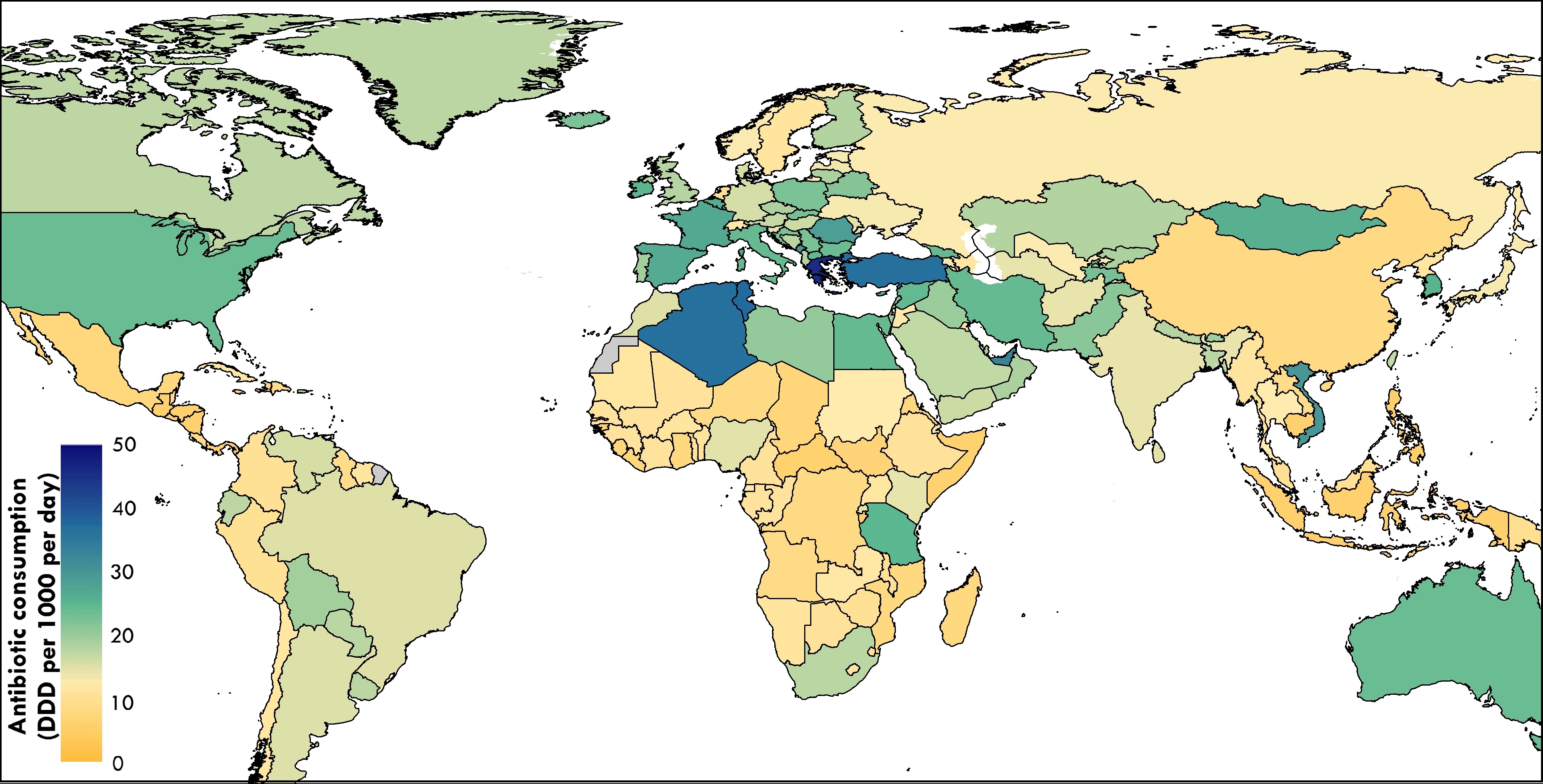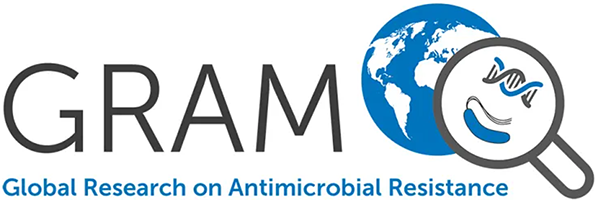Global antibiotic consumption & use
Covariate
 ©
Adobe Stock
©
Adobe Stock
 Global antibiotic consumption in 204 countries and territories (2018)GRAM brings together expertise to investigate a key driver for the development and spread of antimicrobial resistance: global antibiotic consumption and use. Because inappropriate and excess use of antibiotics contributes to the spread of drug-resistant infections globally, the World Health Organization has urged countries to monitor their consumption of antimicrobials. However, many countries lack effective surveillance capacity, therefore GRAM applies statistical methods to estimate global antibiotic consumption over time. Our research aims to inform health policy and provide benchmarks from which future interventions to reduce antibiotic consumption, as well as facilitating access to these life-saving treatments where needed, can be assessed.
Global antibiotic consumption in 204 countries and territories (2018)GRAM brings together expertise to investigate a key driver for the development and spread of antimicrobial resistance: global antibiotic consumption and use. Because inappropriate and excess use of antibiotics contributes to the spread of drug-resistant infections globally, the World Health Organization has urged countries to monitor their consumption of antimicrobials. However, many countries lack effective surveillance capacity, therefore GRAM applies statistical methods to estimate global antibiotic consumption over time. Our research aims to inform health policy and provide benchmarks from which future interventions to reduce antibiotic consumption, as well as facilitating access to these life-saving treatments where needed, can be assessed.
Our research provides the first longitudinal antibiotic consumption estimates for 204 countries and territories between 2000 and 2018. Estimating consumption in both high-income and low-and-middle-income countries (HICs and LMICs), GRAM research utilises antibiotic sales data, household surveys, and a unique model for measuring antibiotic usage in children under five with a lower respiratory infection (LRI). We also estimate consumption by antibiotic class, helping researchers and health officials monitor access to treatment, and the WHO target of 60% of Access category for antibiotic consumption.
GRAM findings for 2018 identify the highest rates of total antibiotic consumption in North Africa and the Middle East super region, followed by the High-Income super region, and the lowest in sub-Saharan Africa (see map). Among individual countries, in 2018 the highest consumption rate was 45.9 defined daily doses (DDDs) per 1,000 population per day, and the lowest rate was 5.0 DDDs per 1,000 per day. The study also identifies large variations in the proportion of antibiotics classes used in different geographic contexts. The results highlight significant growth in consumption over time, with the global antibiotic consumption rate rising from 9.8 to 14.3 DDDs per 1,000 population per day between 2000 and 2018, an increase of 46 percent. Consumption in LMICs increased by 76 percent during the same period, rising by 116 percent in South Asia, and by 111 percent in North Africa and the Middle East.
For more detailed visualisations visit our interactive map

